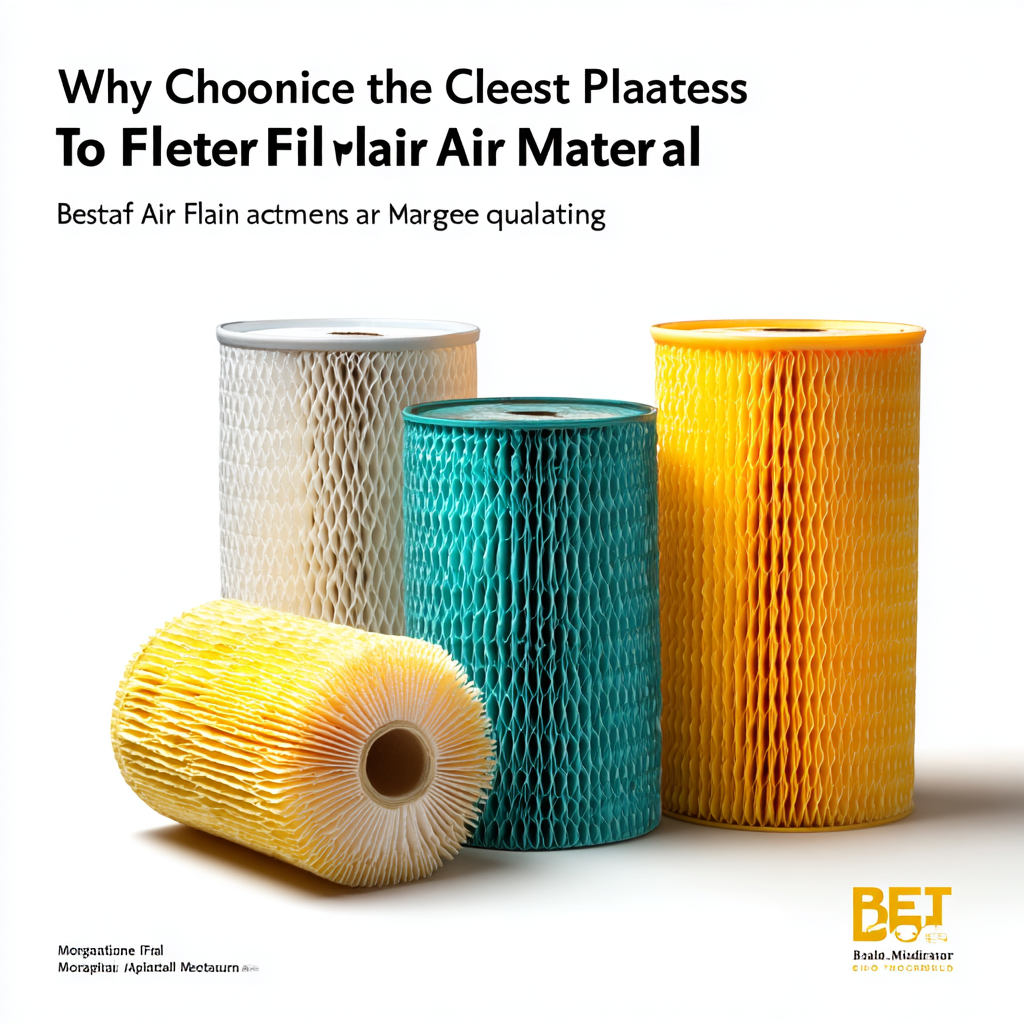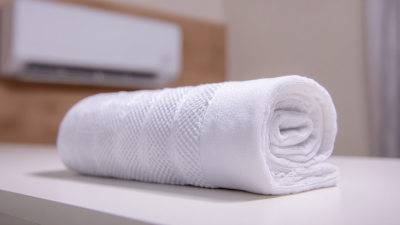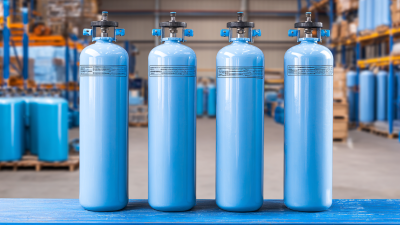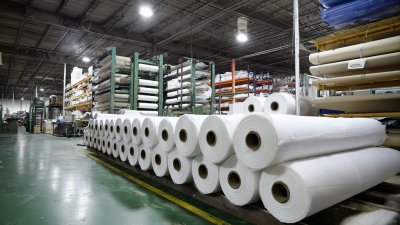Leave Your Message
In the quest for optimal indoor air quality, selecting the Best Pleated Air Filter Material is crucial. According to the Environmental Protection Agency (EPA), indoor air can be two to five times more polluted than outdoor air, making effective filtration paramount for health and well-being. 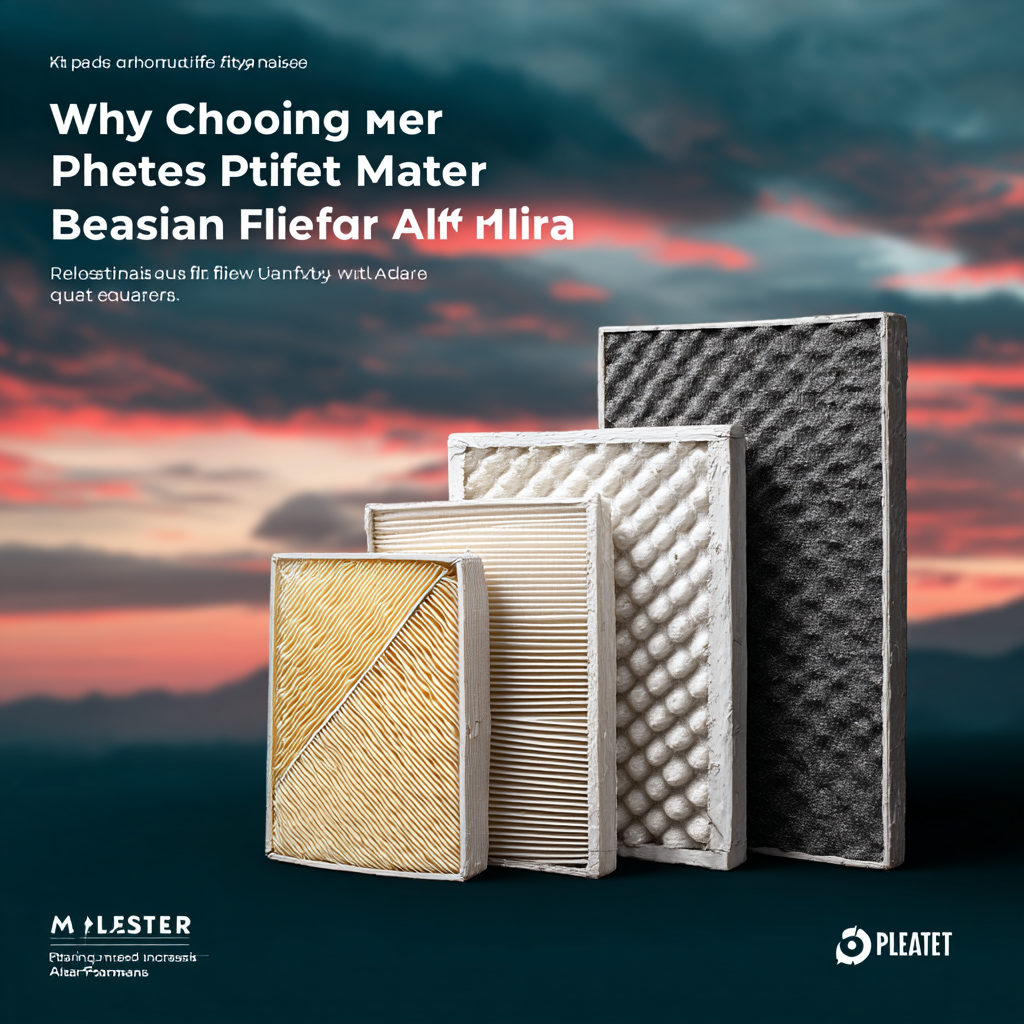 Pleated air filters, renowned for their high efficiency and larger surface area, have become an industry standard. Research from the American Society of Heating, Refrigerating, and Air-Conditioning Engineers (ASHRAE) emphasizes that the right filter can capture up to 95% of airborne particles, significantly reducing allergens, dust, and pollutants.
Pleated air filters, renowned for their high efficiency and larger surface area, have become an industry standard. Research from the American Society of Heating, Refrigerating, and Air-Conditioning Engineers (ASHRAE) emphasizes that the right filter can capture up to 95% of airborne particles, significantly reducing allergens, dust, and pollutants.
The material of pleated air filters plays a vital role in their performance. High-quality materials, such as synthetic fibers and electrostatically charged media, outperform traditional fiberglass filters in trapping microscopic particles. The latest market analysis reports indicate that filters made from premium materials not only enhance airflow but also prolong HVAC system life, saving homeowners on energy costs and maintenance. As consumers become more informed about air quality, the demand for the Best Pleated Air Filter Material continues to rise, driving innovation and adherence to stringent industry standards. By prioritizing the selection of suitable filter materials, households and businesses alike can ensure cleaner, healthier environments.
Pleated air filters are essential components in maintaining air quality in both residential and commercial settings. Designed with a larger surface area compared to traditional filters, pleated filters effectively capture allergens, dust, and particulate matter. According to a report from the U.S. Environmental Protection Agency (EPA), poor indoor air quality contributes to health issues, including respiratory problems and allergies, impacting over 50 million Americans annually. The ability of pleated filters to trap up to 95% of airborne particles can significantly enhance indoor environments.

Understanding the various materials used in pleated air filters is crucial for optimal performance. High-efficiency particulate air (HEPA) filters, for instance, are known to remove 99.97% of particles as small as 0.3 microns. A study from the American Society of Heating, Refrigerating and Air-Conditioning Engineers (ASHRAE) highlights that using the right filter material can improve the filtration efficiency by up to 40%. Choosing the best pleated air filter material can therefore not only prolong the lifespan of HVAC systems but also ensure cleaner and healthier air for occupants.
When it comes to maintaining clean air quality, the choice of materials in pleated air filters plays a crucial role in their overall performance. Common materials used in these filters include fiberglass, synthetic fibers, and activated carbon. According to a report by the U.S. Environmental Protection Agency (EPA), high-efficiency particulate air (HEPA) filters, often made with synthetic fibers, can trap particles as small as 0.3 microns with an efficiency of up to 99.97%. This high level of filtration is essential in environments where air quality is paramount, such as hospitals and laboratories.
In addition to HEPA filters, activated carbon filters have gained popularity due to their ability to absorb odors and volatile organic compounds (VOCs). The Journal of Environmental Quality reports that activated carbon can reduce airborne chemicals by up to 90%, making it a valuable addition to standard filtration systems in residential and commercial spaces.
**Tips:** When selecting pleated air filters, consider the MERV (Minimum Efficiency Reporting Value) rating, which indicates the filter's ability to capture various sizes of particles. Opt for filters with a MERV rating of 8 or higher for optimal performance in reducing allergens and airborne pollutants. Regularly replacing filters every 3-6 months can also ensure that your air quality remains consistently high, helping to maintain a healthier environment.
| Material Type | Filtration Efficiency (%) | Dust Holding Capacity (g/m2) | Initial Pressure Drop (Pa) | Lifespan (months) |
|---|---|---|---|---|
| Polyester | 85 | 180 | 40 | 12 |
| Fiberglass | 90 | 200 | 50 | 8 |
| Electrostatic | 95 | 150 | 30 | 10 |
| Activated Carbon | 88 | 160 | 35 | 6 |
| Synthetic Blend | 92 | 170 | 45 | 14 |
When selecting pleated air filters, understanding MERV ratings is essential for ensuring optimal air quality. MERV, or Minimum Efficiency Reporting Value, is a scale that measures the effectiveness of air filters in trapping airborne particles. The ratings range from 1 to 20, where a higher MERV number indicates a greater efficiency in filtering out smaller particles. For instance, filters rated between 1 and 4 are suitable for casual residential environments, whereas those rated between 13 and 16 are capable of capturing fine particles, such as pollen, pet dander, and even some bacteria.
Evaluating MERV ratings can significantly impact the air inside your home or office. Filters with higher MERV ratings not only trap dust and allergens more effectively but also contribute to overall health by improving indoor air quality. However, it is important to consider the balance between filtration efficiency and HVAC system compatible airflow. Using a filter that’s too restrictive may strain your system, leading to increased energy costs and potential damage. Therefore, choosing the right pleated air filter material while understanding MERV ratings is crucial for achieving clean, healthy air without compromising your system’s performance.
When selecting pleated air filters, understanding the relationship between airflow and resistance is crucial. Airflow refers to the volume of air that can pass through the filter, while resistance denotes the filter's ability to impede that airflow. A filter with high airflow capacity allows for efficient circulation within HVAC systems, ensuring that indoor environments remain comfortable and breathable. However, too much airflow without adequate filtration can lead to poor air quality and the bypass of harmful particles.
To strike the right balance, the material used in pleated filters plays a significant role. High-quality filter media can enhance both airflow and filtration efficiency, minimizing the resistance that users experience. Many filters on the market attempt to maximize airflow, often leading to compromised particle capture efficiency. Therefore, it is essential to consider not only the filtration level but also how the chosen material influences resistance. The ideal filter design will allow for optimal air movement while effectively capturing pollutants, thereby contributing to overall clean air quality in living and working spaces.
When it comes to maintaining clean air quality, the choice of pleated air filter material can significantly impact both performance and cost. While it might be tempting to opt for cheaper filters, these often sacrifice filtration efficiency and durability. Lower-quality materials may not capture all airborne particles effectively, leading to compromised indoor air quality. Therefore, investing in higher-quality pleated air filters could provide better protection against allergens and pollutants, ultimately ensuring a healthier living environment.
Balancing cost and quality requires careful consideration of individual needs and situations. For instance, in environments with high levels of dust or allergens, opting for premium-filter solutions could result in long-term savings by reducing health complications and improving HVAC efficiency. However, for standard residential use, a mid-range filter may suffice, providing adequate air quality without the financial strain. Making informed choices in this regard ensures that home and business owners can achieve clean air without breaking the bank, striking a crucial balance between fiscal responsibility and health benefits.
